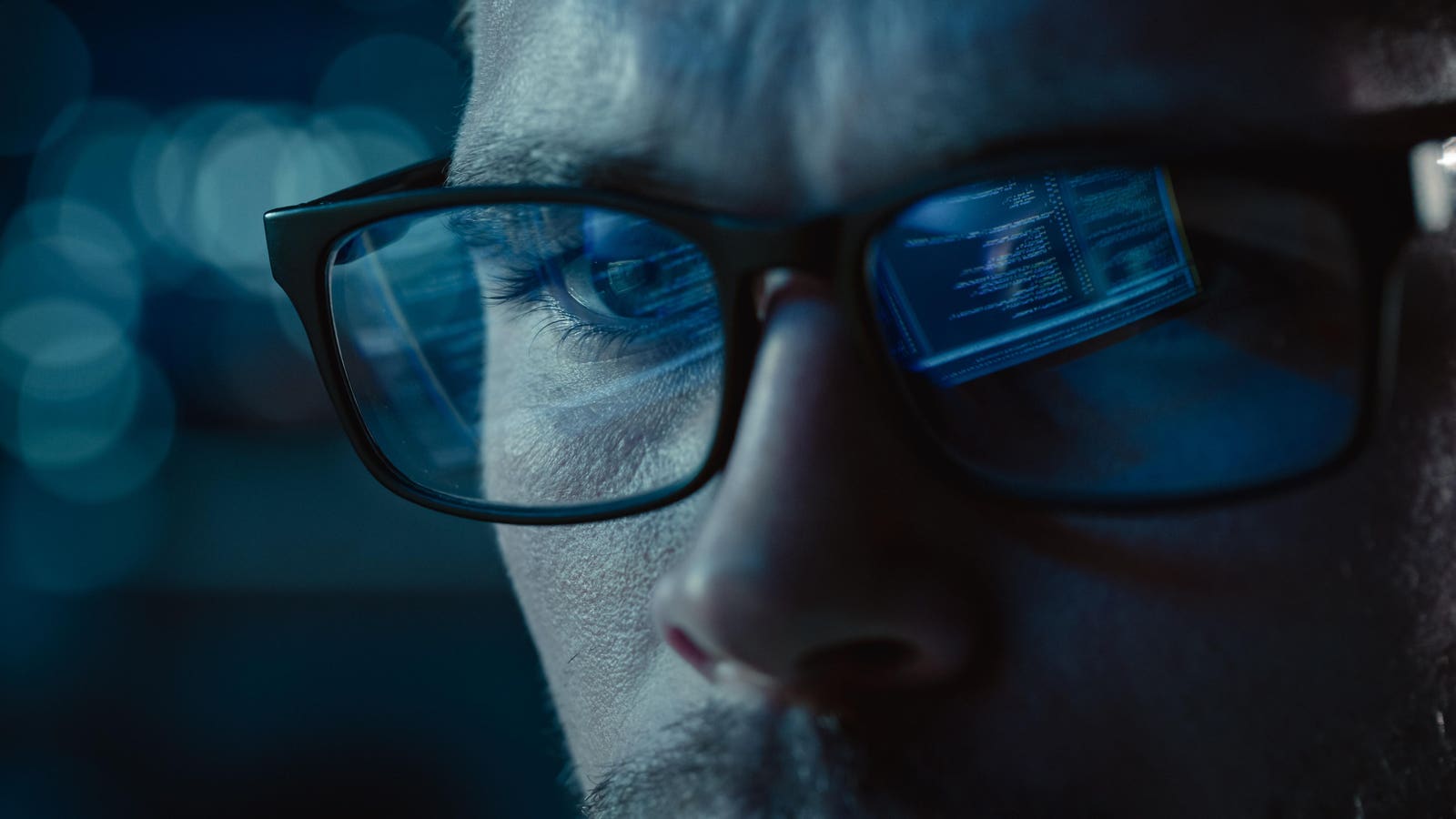Innovation and Technology
FBI Alert Issued As Time Traveling Hackers Attack—Act Now

How Time Travel And The FBI Are Mixed Up In Medusa Attacks
A Quick Recap of the Medusa Ransomware Attacks
Medusa, a type of ransomware, has been known to impact at least 300 critical infrastructure targets. It uses social engineering and unpatched software vulnerabilities as part of its exploit campaign. The FBI has issued a critical security advisory, outlining tactics, techniques, and procedures, indicators of compromise, and detection methods associated with the Medusa attacks.
Time Travel Hacking Technique
Boris Cipot, a senior security engineer at Black Duck, revealed that Medusa attackers are creatively abusing system misconfigurations in their efforts to bypass security controls. The attackers have been using a time travel hacking technique, which involves changing the system date to a time when a security certificate, which signed a certain driver, was still valid. This allows the attackers to load the expired driver, which would normally be rejected by the system.
Mitigating the Time Travel Hackers
To mitigate this kind of time travel hackery, Cipot advised that organizations need a combination of best-in-class endpoint protection, strict policy enforcement, and proactive monitoring. Detection of system configuration changes is also essential, as it’s the system time changes that proved central to the failure of security protections in the case of the Medusa attacks. Additionally, Windows should be configured to enforce strict revocation checks for signed drivers, blocking the expired certificates.
FBI’s Advice on Mitigating Medusa Attacks
The FBI has advised users to:
- Enable two-factor authentication for all services where possible, particularly for webmail, virtual private networks, and accounts that can access critical systems.
- Employ long passwords on all accounts that require them.
- Refrain from imposing a requirement for frequent password changes.
- Keep all operating systems, software, and firmware up to date.
- Patching should be prioritized for internet-facing systems where a known vulnerability is concerned.
- Identify, detect, and investigate any abnormal activity that could indicate a potential network traversal of the ransomware.
- Monitor systems for unauthorized scanning and access attempts.
- Filter network traffic to prevent unknown or untrusted actors from accessing remote services on internal systems.
- Audit all user accounts with administrative privileges and configure access controls according to the principle of least privilege.
- Disable command-line and scripting activities and permissions along with all unused ports.
Conclusion
It’s clear that the Medusa attacks are a serious threat to critical infrastructure targets. The use of a time travel hacking technique is a new and innovative way for attackers to bypass security controls. It’s essential that organizations take the FBI’s advice and take proactive measures to mitigate the risk of a Medusa attack.
Frequently Asked Questions
Q: What is Medusa ransomware?
A: Medusa is a type of ransomware that uses social engineering and unpatched software vulnerabilities as part of its exploit campaign.
Q: How do attackers use time travel hacking?
A: Attackers use a time travel hacking technique, which involves changing the system date to a time when a security certificate, which signed a certain driver, was still valid.
Q: How can I protect my systems from Medusa attacks?
A: Enable two-factor authentication, employ long passwords, keep all operating systems, software, and firmware up to date, and patching should be prioritized for internet-facing systems where a known vulnerability is concerned.
Innovation and Technology
Ransomware Hackers Are Watching You

Ransomware Attackers’ New Tactic: Watching Your Every Move
The ransomware threat is evolving, and attackers are continually seeking new angles and technologies to exploit, to aid with leveraging payments in these modern-day extortion schemes. Some are hard to fathom, like the DOGE-trolling hackers demanding $1 trillion, exploiting zero-day vulnerabilities in Windows, and the increasingly common use of 2FA bypass attacks and access to 19 billion compromised passwords on the dark web. But what if ransomware hackers were using employee monitoring software to see what you are up to during the attack and to steal your credentials as well? Welcome to the sinister world of Qilin and Hunters International ransomware.
How Ransomware Attackers Can Spy On You
While the Federal Bureau of Investigation and the Cybersecurity and Infrastructure Security Agency have recently issued a security alert about the dangers that unsophisticated threat actors pose to U.S. critical infrastructure services, that doesn’t mean all ransomware hackers are using the kind of basic and elementary intrusion techniques described in the CISA advisory. Take the Qilin and Hunters International ransomware threat, whose affiliates have been observed using a legitimate employee monitoring tool during their attacks.
The Qilin and Hunters International Ransomware Attack
The ransomware attacks in question started with malicious Google Ads deployed by the threat actors. These were designed to display “when people searched for RVTools, a free Windows utility for managing VMware vSphere deployments,” Sergiu Gatlan at Bleeping Computer, said. If the would-be victim clicked through that advert then it started a waterfall of nefarious events leading to the download and installation of something called Kickidler.
Kickidler: A Legitimate Employee Monitoring Tool Turned Malicious
Here’s the thing: Kickidler is not malware. In fact, it’s a perfectly legitimate employee monitoring tool that’s deployed by more than 5,000 organizations across the world. The key point of interest is that it provides a visual monitoring capability. Once installed, the ransomware hackers can literally see what you are doing.
Consequences of the Attack
Varonis threat research investigators have suggested that the ransomware attackers have used the software in order to have undetected access to target systems for weeks at a time, enabling the collection of the credentials required to gain access to critical off-site cloud data backups. It is recommended, therefore, that network defenders ensure the effective and regular auditing of any installed remote monitoring and management software.
Conclusion
The Qilin and Hunters International ransomware attack is a stark reminder of the evolving nature of cyber threats. As attackers become more sophisticated, it’s essential for organizations to stay vigilant and take proactive measures to protect themselves. By understanding the tactics used by these attackers, we can better equip ourselves to prevent such attacks and minimize their impact.
Frequently Asked Questions
Q: What is Qilin and Hunters International ransomware?
A: Qilin and Hunters International is a type of ransomware that uses a legitimate employee monitoring tool to spy on victims and steal their credentials.
Q: How does the attack start?
A: The attack starts with malicious Google Ads that lead to the download and installation of the Kickidler employee monitoring tool.
Q: What is Kickidler?
A: Kickidler is a legitimate employee monitoring tool that provides visual monitoring capability, which can be used by ransomware attackers to spy on victims.
Q: How can organizations protect themselves?
A: Organizations can protect themselves by ensuring the effective and regular auditing of any installed remote monitoring and management software and being cautious when clicking on online ads.
Innovation and Technology
The Best Tools for Remote Customer Service: Providing Exceptional Support

With the rise of remote work, Tools for hybrid and remote work have become essential for businesses to provide exceptional customer support. In this article, we’ll explore the best tools for remote customer service, enabling companies to deliver top-notch support to their customers from anywhere. Effective customer support is crucial for building trust, loyalty, and driving business growth. Let’s dive in and discover the tools that can help you achieve this goal.
Understanding Remote Customer Service
Remote customer service refers to the support provided to customers by a team of representatives who work from remote locations, often using digital tools and technologies to interact with customers. This approach has become increasingly popular due to its flexibility, cost-effectiveness, and ability to provide 24/7 support. To deliver exceptional customer support remotely, businesses need to leverage the right tools and technologies.
Benefits of Remote Customer Service
The benefits of remote customer service are numerous, including increased flexibility, reduced costs, and improved customer satisfaction. With remote customer service, businesses can hire the best talent from around the world, rather than being limited to a specific geographic location. Additionally, remote customer service enables companies to provide 24/7 support, which is essential for building trust and loyalty with customers.
Essential Tools for Remote Customer Service
To provide exceptional customer support remotely, businesses need to use a range of tools and technologies. Some of the essential tools include:
Helpdesk Software
Helpdesk software is a critical tool for remote customer service, enabling companies to manage customer inquiries, issues, and feedback in a centralized platform. Popular helpdesk software includes Zendesk, Freshdesk, and Salesforce Service Cloud. These tools provide features such as ticket management, automation, and analytics, making it easier to resolve customer issues efficiently.
Live Chat Software
Live chat software is another essential tool for remote customer service, enabling companies to provide instant support to customers on their website, social media, or mobile app. Popular live chat software includes Intercom, Drift, and Chatbot. These tools provide features such as chatbots, automation, and analytics, making it easier to engage with customers and resolve issues quickly.
Video Conferencing Tools
Video conferencing tools are essential for remote customer service, enabling companies to provide face-to-face support to customers remotely. Popular video conferencing tools include Zoom, Skype, and Google Meet. These tools provide features such as screen sharing, recording, and analytics, making it easier to provide personalized support to customers.
Social Media Management Tools
Social media management tools are critical for remote customer service, enabling companies to manage customer inquiries and issues on social media platforms. Popular social media management tools include Hootsuite, Sprout Social, and Buffer. These tools provide features such as scheduling, analytics, and engagement, making it easier to respond to customer inquiries and issues on social media.
Best Practices for Remote Customer Service
To provide exceptional customer support remotely, businesses need to follow best practices, including:
Define Clear Processes and Procedures
Defining clear processes and procedures is essential for remote customer service, ensuring that customer inquiries and issues are handled efficiently and effectively. Businesses should establish clear guidelines for responding to customer inquiries, resolving issues, and escalating complex problems.
Invest in Ongoing Training and Development
Investing in ongoing training and development is critical for remote customer service, ensuring that customer support representatives have the skills and knowledge needed to provide exceptional support. Businesses should provide regular training and coaching to customer support representatives, focusing on areas such as communication, problem-solving, and product knowledge.
Use Data and Analytics to Drive Decision-Making
Using data and analytics is essential for remote customer service, enabling businesses to make informed decisions about customer support strategies and processes. Businesses should use data and analytics to track customer support metrics, such as response times, resolution rates, and customer satisfaction, and use this data to identify areas for improvement.
Challenges and Limitations of Remote Customer Service
While remote customer service offers numerous benefits, it also presents several challenges and limitations, including:
Communication Barriers
Communication barriers are a significant challenge for remote customer service, making it difficult for customer support representatives to communicate effectively with customers. Businesses should invest in tools and technologies that enable clear and effective communication, such as video conferencing and live chat software.
Technical Issues
Technical issues are another challenge for remote customer service, making it difficult for customer support representatives to access the tools and technologies needed to provide support. Businesses should invest in reliable and secure infrastructure, ensuring that customer support representatives can access the tools and technologies needed to provide exceptional support.
Security and Data Protection
Security and data protection are critical concerns for remote customer service, ensuring that customer data is protected and secure. Businesses should invest in robust security measures, such as encryption and access controls, to protect customer data and prevent unauthorized access.
Conclusion
In conclusion, providing exceptional customer support remotely requires the right tools, technologies, and strategies. Businesses should invest in essential tools such as helpdesk software, live chat software, video conferencing tools, and social media management tools. Additionally, businesses should follow best practices, such as defining clear processes and procedures, investing in ongoing training and development, and using data and analytics to drive decision-making. By leveraging these tools and strategies, businesses can deliver exceptional customer support remotely, building trust, loyalty, and driving business growth.
Frequently Asked Questions (FAQs)
What are the benefits of remote customer service?
The benefits of remote customer service include increased flexibility, reduced costs, and improved customer satisfaction. Remote customer service enables businesses to hire the best talent from around the world, provide 24/7 support, and improve customer engagement.
What are the essential tools for remote customer service?
The essential tools for remote customer service include helpdesk software, live chat software, video conferencing tools, and social media management tools. These tools enable businesses to manage customer inquiries, provide instant support, and engage with customers on social media.
How can businesses ensure effective communication in remote customer service?
Businesses can ensure effective communication in remote customer service by investing in tools and technologies that enable clear and effective communication, such as video conferencing and live chat software. Additionally, businesses should establish clear guidelines for communication, such as response times and communication channels.
What are the challenges and limitations of remote customer service?
The challenges and limitations of remote customer service include communication barriers, technical issues, and security and data protection concerns. Businesses should invest in reliable and secure infrastructure, establish clear guidelines for communication, and invest in robust security measures to protect customer data.
How can businesses measure the success of remote customer service?
Businesses can measure the success of remote customer service by tracking customer support metrics, such as response times, resolution rates, and customer satisfaction. Additionally, businesses should use data and analytics to identify areas for improvement and make informed decisions about customer support strategies and processes.
Innovation and Technology
Industry 4.0 and the Smart Factory: Digital Transformation in Manufacturing

Implementing digital transformation strategies to stay competitive is crucial in today’s manufacturing landscape. The fourth industrial revolution, also known as Industry 4.0, is revolutionizing the way goods are produced, processed, and delivered. By leveraging cutting-edge technologies like the Internet of Things (IoT), artificial intelligence (AI), and machine learning (ML), manufacturers can create smart factories that are more efficient, flexible, and productive.
What is Industry 4.0?
Industry 4.0 refers to the integration of digital, physical, and biological systems to create a more efficient and interconnected manufacturing ecosystem. This new paradigm is characterized by the widespread adoption of digital technologies, such as robotics, automation, and data analytics, to improve manufacturing processes and create new business models. The goal of Industry 4.0 is to create a more agile, responsive, and customer-centric manufacturing system that can adapt quickly to changing market demands.
Key Technologies Driving Industry 4.0
Several key technologies are driving the Industry 4.0 revolution, including IoT, AI, ML, and blockchain. These technologies enable real-time data collection, analysis, and decision-making, allowing manufacturers to optimize production processes, predict maintenance needs, and improve product quality. Additionally, technologies like augmented reality (AR) and virtual reality (VR) are being used to enhance worker training, improve design and development processes, and create immersive customer experiences.
The Smart Factory: A Key Component of Industry 4.0
The smart factory is a key component of Industry 4.0, representing a highly connected and automated production facility that uses data and analytics to optimize processes and improve efficiency. Smart factories leverage technologies like IoT sensors, robotics, and AI to create a highly flexible and adaptable production system that can respond quickly to changing market demands. By integrating data from various sources, smart factories can optimize production planning, inventory management, and supply chain logistics, reducing waste and improving overall efficiency.
Benefits of the Smart Factory
The smart factory offers numerous benefits, including increased productivity, improved product quality, and reduced costs. By leveraging real-time data and analytics, manufacturers can identify areas for improvement, optimize production processes, and predict maintenance needs, reducing downtime and improving overall efficiency. Additionally, smart factories can improve worker safety, enhance customer satisfaction, and create new business models and revenue streams.
Implementing Industry 4.0 and the Smart Factory
Implementing Industry 4.0 and the smart factory requires a strategic approach, starting with a clear understanding of business goals and objectives. Manufacturers must assess their current operations, identify areas for improvement, and develop a roadmap for digital transformation. This may involve investing in new technologies, training personnel, and developing new business models and processes. Additionally, manufacturers must ensure that their IT infrastructure is secure, scalable, and able to support the demands of Industry 4.0.
Challenges and Opportunities
While Industry 4.0 and the smart factory offer numerous benefits, there are also challenges and opportunities to consider. One of the main challenges is the need for significant investment in new technologies and infrastructure. Additionally, manufacturers must address concerns around data security, worker training, and job displacement. However, these challenges also present opportunities for innovation, growth, and competitiveness, as manufacturers that adopt Industry 4.0 and the smart factory are likely to gain a competitive edge in the market.
Real-World Examples of Industry 4.0 and the Smart Factory
There are numerous real-world examples of Industry 4.0 and the smart factory in action, across various industries and sectors. For example, companies like Siemens, GE, and Bosch are using IoT sensors, AI, and data analytics to optimize production processes, predict maintenance needs, and improve product quality. Additionally, companies like Amazon and Walmart are using robotics, automation, and data analytics to improve supply chain logistics, reduce costs, and enhance customer satisfaction.
Case Studies
Several case studies demonstrate the benefits of Industry 4.0 and the smart factory. For example, a study by McKinsey found that a leading manufacturer was able to reduce production costs by 20% and improve product quality by 15% by implementing a smart factory. Another study by Deloitte found that a leading retailer was able to reduce inventory levels by 30% and improve supply chain efficiency by 25% by leveraging IoT sensors and data analytics.
Conclusion
In conclusion, Industry 4.0 and the smart factory are revolutionizing the manufacturing landscape, offering numerous benefits, including increased productivity, improved product quality, and reduced costs. By leveraging cutting-edge technologies like IoT, AI, and ML, manufacturers can create highly connected and automated production facilities that respond quickly to changing market demands. While there are challenges and opportunities to consider, the benefits of Industry 4.0 and the smart factory make them an essential part of any manufacturer’s digital transformation strategy.
Frequently Asked Questions (FAQs)
Q: What is Industry 4.0?
A: Industry 4.0 refers to the integration of digital, physical, and biological systems to create a more efficient and interconnected manufacturing ecosystem.
Q: What is the smart factory?
A: The smart factory is a highly connected and automated production facility that uses data and analytics to optimize processes and improve efficiency.
Q: What are the benefits of Industry 4.0 and the smart factory?
A: The benefits of Industry 4.0 and the smart factory include increased productivity, improved product quality, reduced costs, and enhanced customer satisfaction.
Q: How can manufacturers implement Industry 4.0 and the smart factory?
A: Manufacturers can implement Industry 4.0 and the smart factory by assessing their current operations, identifying areas for improvement, and developing a roadmap for digital transformation.
Q: What are the challenges and opportunities of Industry 4.0 and the smart factory?
A: The challenges of Industry 4.0 and the smart factory include the need for significant investment in new technologies and infrastructure, as well as concerns around data security, worker training, and job displacement. However, these challenges also present opportunities for innovation, growth, and competitiveness.
-

 Career Advice5 months ago
Career Advice5 months agoInterview with Dr. Kristy K. Taylor, WORxK Global News Magazine Founder
-

 Diversity and Inclusion (DEIA)5 months ago
Diversity and Inclusion (DEIA)5 months agoSarah Herrlinger Talks AirPods Pro Hearing Aid
-

 Career Advice5 months ago
Career Advice5 months agoNetWork Your Way to Success: Top Tips for Maximizing Your Professional Network
-

 Changemaker Interviews4 months ago
Changemaker Interviews4 months agoUnlocking Human Potential: Kim Groshek’s Journey to Transforming Leadership and Stress Resilience
-

 Diversity and Inclusion (DEIA)5 months ago
Diversity and Inclusion (DEIA)5 months agoThe Power of Belonging: Why Feeling Accepted Matters in the Workplace
-

 Global Trends and Politics5 months ago
Global Trends and Politics5 months agoHealth-care stocks fall after Warren PBM bill, Brian Thompson shooting
-

 Global Trends and Politics5 months ago
Global Trends and Politics5 months agoUnionization Goes Mainstream: How the Changing Workforce is Driving Demand for Collective Bargaining
-

 Training and Development5 months ago
Training and Development5 months agoLevel Up: How Upskilling Can Help You Stay Ahead of the Curve in a Rapidly Changing Industry




















